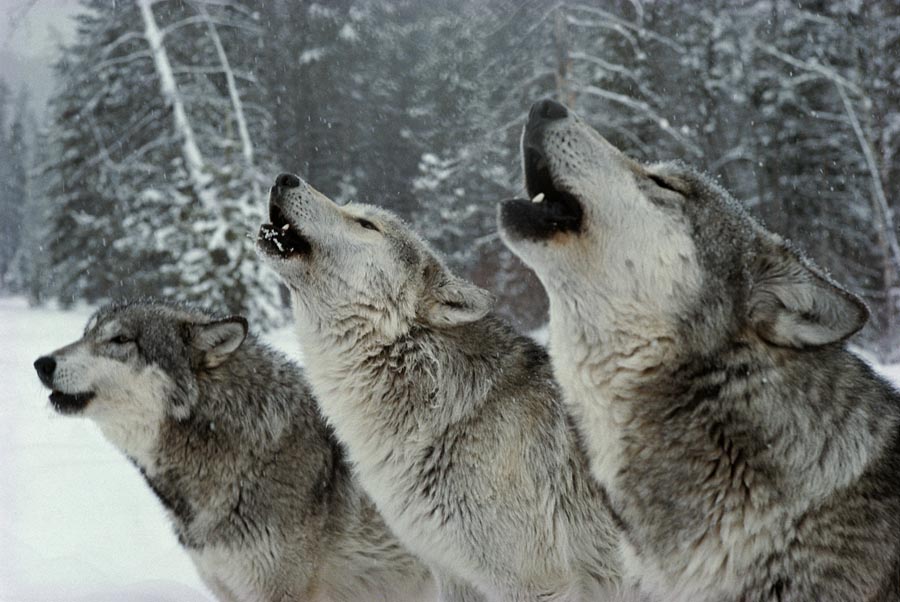On Thursday, Sept. 11, The Wisconsin Department of Natural Resources presented a revision to the wolf population estimates, stating that there are now more than 1,200 wolves in Wisconsin. The DNR presented their revision at the first meeting of the Wolf Advisory Committee since 2014, when the federal court ruled that wolves be placed back on the endangered species list.
Winter surveys of wolf tracks, live trapping and the monitoring of GPS collars provide information for the DNR that allow the agency to keep track of the wolf population’s health and abundance. The DNR had estimated that Wisconsin had around 1,000 wolves in 2023, but they were unable to produce an over-winter population estimate for 2024 due to a lack of snow and several failures of the GPS collars. According to Lydia Margenau, the wildlife population monitoring and modeling research scientist for the DNR, they have since changed collar companies which has improved its population and monitoring models. The current estimate for 2025 is between 1,087 and 1,379 wolves. “The current population remains nearly as large and widespread as it’s been in modern time,” Margenau says.
While the rise in Wisconsin’s wolf populations is something to celebrate, there are also some concerns about the quality of life for these wolves. Data analysis conducted by wildlife regulators has shown that the wolf population is starting to level off and is no longer expanding. Previous DNR research has found that Wisconsin has an estimated biological carrying capacity of 1,242 wolves. This has proven a concern for one of the large carnivore specialists in the DNR, Randy Johnson. Johnson has said that the reason for the leveling off of the wolf population is due to several factors, one of which is the availability of prime habitat. Because they are reaching the carrying capacity, packs of wolves are being pushed into sub-par habitats, leading to a decline in their overall quality of life. In a statement made by Johnson, he says that “It’s basically a combination of running out of space and some of these internal mechanisms of increased mortality, lower pup survival, things like that.”
Human interference is also cited by Randy Johnson as a factor for the observed limit in the wolf population. The DNR has recorded 36 deaths during the 2024-2025 monitoring period. 12 of these wolves were killed illegally, accounting for a third of the recorded deaths. Most of the wolves died because of vehicle collisions caused by the spreading of wolves across the state.
The DNR’s wolf advisory committee is tasked with developing policies and harvest quotas in order to safely manage Wisconsin’s wolf population. Many Republican lawmakers are looking to make changes to the DNR’s wolf harvest regulations, citing concerns about the organization’s lack of a population goal. In a letter sent by the DNR on September 4th, it was stated that they would not be changing their wolf harvest regulations.
While this is happening, Republicans in Congress are looking to remove the gray wolf from the federal endangered species list. A bill was introduced this year that would require the U.S. Fish and Wildlife Service to issue a ruling to removing all federal protections for the gray wolf and barring the courts from reviewing the decision. A 2012 law in Wisconsin requires that a wolf hunt occurs each year when this animal has no federal protection. This has brought many concerns from Animal advocacy groups and Wisconsin tribes about the delisting of wolves from the list of endangered species, citing the 2021 wolf hunt. In February of 2021, state-licensed hunters killed 218 wolves in under three days, exceeding the quota.
The DNR has received more than 100 verified wolf complaints during their 2024-2025 monitoring period. Hunters and farmers have clamored that the non-lethal methods enforced by the DNR are ineffective at protecting their livestock and hunting dogs from wolf attack. Data from the DNR shows that the deaths of 27 hunting dogs and 2 pet dogs have resulted from wolves; 40 farms were recorded as having wolf conflicts involving their livestock.
Wisconsin’s Wolf Population Grows
0
Tags:




